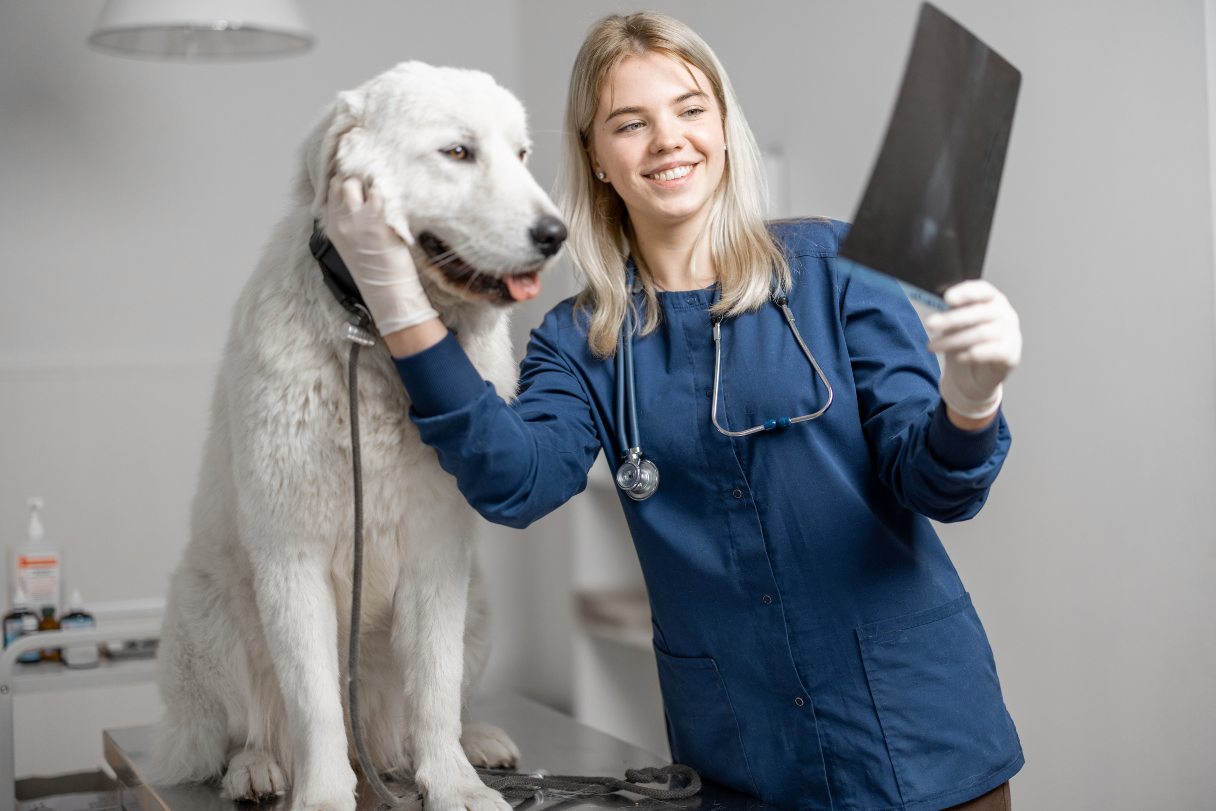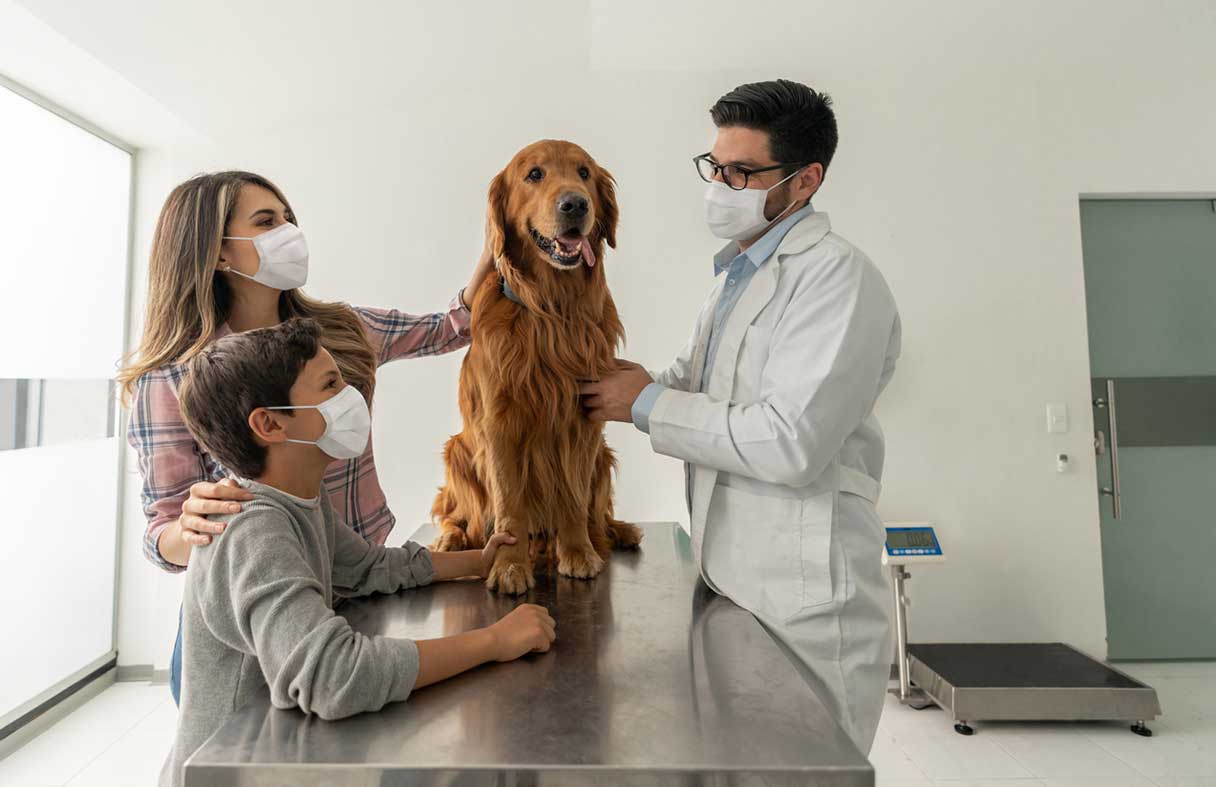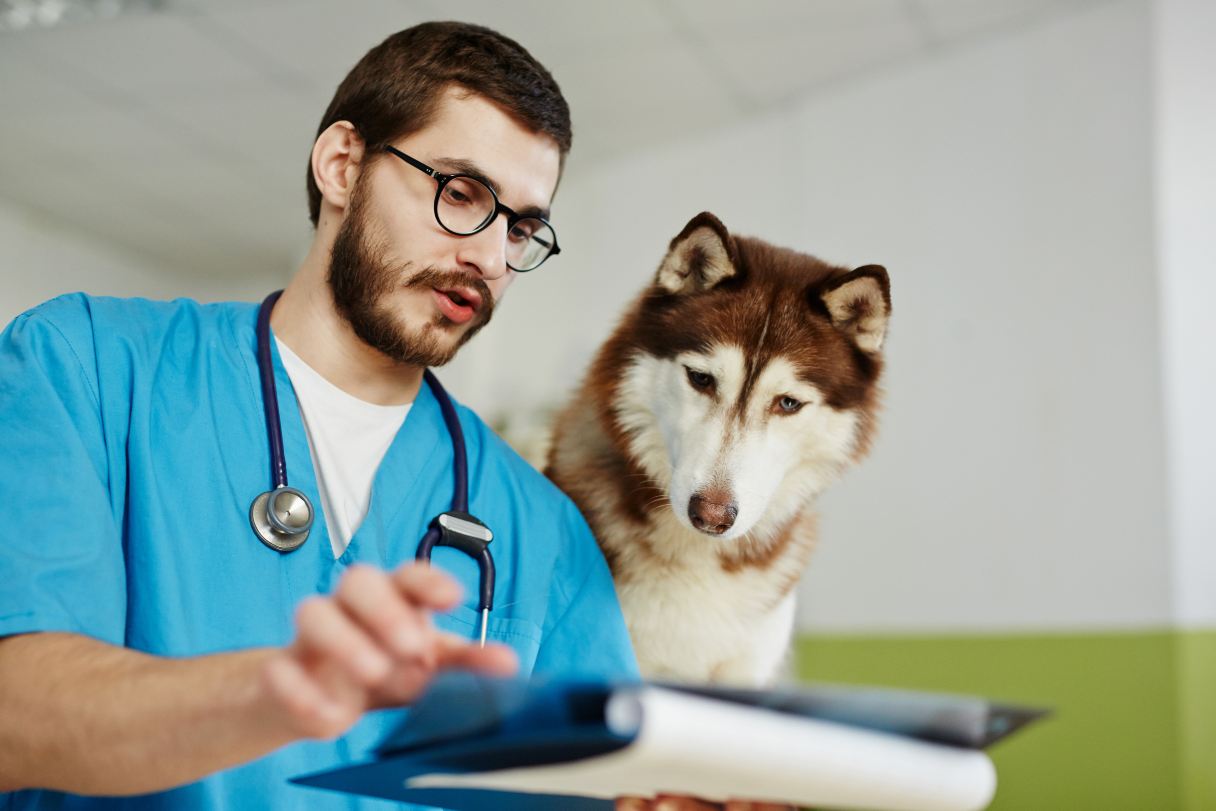If your dog appears to have neurological or spinal issues, your vet might recommend an MRI to help them diagnose the cause. An MRI is safe and effective, but costly. However, this imaging technique can be much more accurate and helpful than less expensive diagnostic imaging methods like X-rays or ultrasounds.
How costly? Somewhere in the thousands. Here's the breakdown of MRI costs for dogs and everything you need to know if your dog ever needs an MRI.
What Is an MRI?
MRI stands for "magnetic resonance imaging." An MRI machine uses a combination of a high-powered magnet and radio waves to capture images that show cross-sections of the body's interior.1 This is a non-invasive way to provide your veterinarian with high-resolution diagnostic images of what's going on inside your dog's body.2
MRIs are mainly used to look at areas of concern that don't show up well in X-rays or computed tomography (CT) scans.3 They're mostly used for imaging of the brain and spinal cord.3 For dogs, MRIs can help detect and diagnose a number of conditions, including:2
- Encephalitis
- Infections
- Meningitis
- Small tumors
- Strokes
- Tissue degeneration
Types of MRIs for dogs
MRIs for dogs are either low field or high field.2 Low-field MRIs use a lower magnetic field strength than high-field MRIs.1 One advantage of this is that low-field MRI machines are easier to house, making them less costly to install and maintain.1 On the other hand, they take longer than high-field MRIs, which can result in more anesthesia being used.2
Besides being faster and requiring less time spent under anesthesia for your dog, high-field MRIs have the added advantage of capturing more detailed and higher-resolution images than low-field MRIs. They tend to be more costly due to the size of the equipment, but they can result in a more accurate diagnosis.2
How Much Does an MRI Cost for Dogs?
The national average cost* of a dog MRI in the United States is $1,958, but prices can range from $1,532 to $3,840.4
The actual cost of your dog’s MRI depends on a number of factors, including the size of your dog, the type of clinic where you obtain the procedure, the vet’s experience and training and whether anesthesia or other diagnostic testing is required.4
Average cost of MRI for a dog by state/district
The average cost* of an MRI for your dog also varies by geographical region. Below is a breakdown of the average costs* of dog MRIs in each of the 50 states and the District of Columbia:4
| State/District | Average cost |
|---|---|
| Alabama | $1,662 |
| Alaska | $2,390 |
| Arizona | $2,009 |
| Arkansas | $1,692 |
| California | $2,452 |
| Colorado | $1,980 |
| Connecticut | $2,070 |
| Delaware | $1,957 |
| District of Columbia | $2,369 |
| Florida | $1,949 |
| Georgia | $1,801 |
| Hawaii | $2,934 |
| Idaho | $1,994 |
| Illinois | $1,847 |
| Indiana | $1,734 |
| Iowa | $1,717 |
| Kansas | $1,742 |
| Kentucky | $1,805 |
| Louisiana | $1,860 |
| Maine | $1,990 |
| Maryland | $2,232 |
| Massachusetts | $2,432 |
| Michigan | $1,793 |
| Minnesota | $1,852 |
| Mississippi | $1,734 |
| Missouri | $1,744 |
| Montana | $1,952 |
| Nebraska | $1,728 |
| Nevada | $1,967 |
| New Hampshire | $2,100 |
| New Jersey | $2,150 |
| New Mexico | $1,759 |
| New York | $2,032 |
| North Carolina | $1,782 |
| North Dakota | $1,797 |
| Ohio | $1,786 |
| Oklahoma | $1,669 |
| Oregon | $2,102 |
| Pennsylvania | $1,906 |
| Rhode Island | $2,133 |
| South Carolina | $1,822 |
| South Dakota | $1,704 |
| Tennessee | $1,768 |
| Texas | $1,802 |
| Utah | $1,984 |
| Vermont | $2,011 |
| Virginia | $1,919 |
| Washington | $2,192 |
| West Virginia | $1,770 |
| Wisconsin | $1,831 |
| Wyoming | $1,807 |
Does Pet Insurance Cover Dog MRIs?
Many pet insurance companies will reimburse you for all or part of the costs of diagnostic imaging, including MRIs.2 Ultimately, whether your pet insurance will cover an MRI for your dog depends on your type of coverage, so you need to review your policy or talk to your provider to be certain.
Also, keep in mind that most pet insurance plans don't cover the cost of treating preexisting conditions; many also require a waiting period after purchasing insurance before you can use it. So, it's best to obtain pet insurance for your dog before you need it.
Is Your Dog a Good Candidate for an MRI?
Your vet may recommend an MRI if your dog shows signs of spinal or neurological problems. These can include:3
- Back or neck pain
- Balance issues
- Behavioral changes
- Loss of mobility
- Seizures
- Weakness
What to Expect When Your Dog Gets an MRI
Because dogs don't lie still enough on their own to get good MRI images, they need to be placed under anesthesia during the MRI.3 At some point prior to the procedure, your vet will likely do an exam and blood work to make sure it's safe for your dog to receive anesthesia.2 This happens especially if there's a chance of complications due to age, health issues or other factors.5
The MRI process usually takes more than an hour. But because of the anesthesia, your pet may be kept longer for monitoring until they're fully awake.2
Are MRIs Safe for Your Dog?
MRIs use magnetic fields and radio waves. Unlike X-rays or CT scans, no radiation is produced.1
However, age or poor health in dogs can offer a higher chance of life-threatening complications from anesthesia used during the procedure. Also, certain breeds, including toy breeds, as well as some larger dogs like greyhounds and Cavalier King Charles spaniels, are more susceptible to anesthesia complications. Flat-nosed breeds like pugs and Boston terriers may also have complications due to issues with their airways.5
Any concerns you may have about your dog undergoing anesthesia should be discussed with your vet. They can help you weigh the pros and cons and decide whether the benefit of getting an accurate diagnosis with an MRI is worth it for the health of your dog.
Helping Your Dog Recover From an MRI
While the MRI procedure itself isn't something your dog will need to recover from, they may experience grogginess or lingering effects from the anesthesia, which can take up to 24 hours to wear off completely.6
Here are some tips for keeping your dog safe and comfortable while you wait:7
- Do not allow them to climb stairs or furniture without assistance. They may be wobbly, so it's best to keep them close to the ground in case they fall.
- Encourage them to drink water, but watch that they don't fall asleep with their face in the water bowl.
- Keep the temperature at a comfortable level. The anesthesia might throw off their internal temperature regulation, so you may need to provide blankets to keep them warm or keep them inside with air-conditioning so they don't overheat.
- Offer bland food, but don't force them to eat. They may feel nauseated from the anesthesia.
- Supervise them when they go outside to potty and help them balance if they need it.
If your dog's appetite doesn't return in a day or two, or you notice any concerning behavior, you should contact your vet for advice.7
The Bottom Line
MRIs are a safe and effective diagnostic procedure for dogs. When accuracy matters, MRIs can provide your vet with information that they can’t obtain through less costly imaging techniques. Ultimately, the best judges for whether your beloved pup is a good candidate for an MRI are you and your vet. You should talk to them about any questions or concerns you have about an MRI for your dog.
CareCredit Credit Card Financing for Dogs
The CareCredit credit card provides a convenient way to pay for your dog's vaccinations and other health and wellness expenses, including exams, medications and products at providers in the CareCredit network.** Continue your wellness journey by downloading the CareCredit Mobile App. You can find a provider on the go, manage your CareCredit account and easily access the Well U blog for more great articles, podcasts and videos. Use our Acceptance Locator to find a veterinarian that accepts CareCredit to help keep your pet healthy and happy for a lifetime of love.
In addition to pet care, you can also use your CareCredit credit card for dentistry, cosmetic, vision, hearing, health systems, dermatology, pharmacy purchases, spa treatments and so much more within the CareCredit network. How will you invest in your health and wellness next?
Author Bio
Jean Marie Bauhaus is a freelance writer and novelist who has been writing pet content since 2013. Her work has appeared on Forbes.com, Hill's Pet, Chewy, AKC.org and more.







